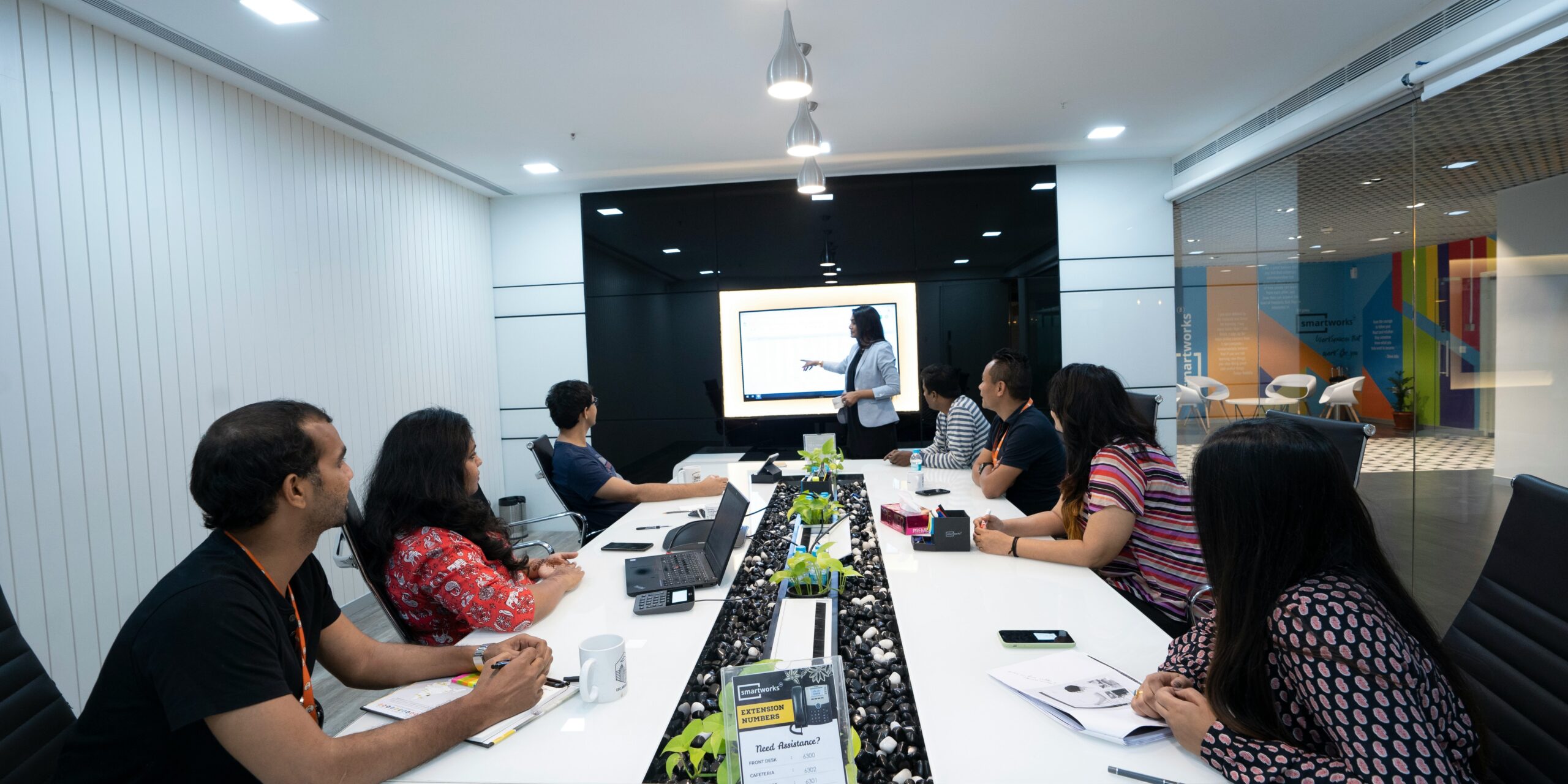Interactive Video-based Learning: A Game Changer
Interactive video-based learning has emerged as a game changer in the field of education and training. By combining the power of video with interactive elements, this approach engages learners in a dynamic and immersive learning experience. Let’s explore the power and benefits of interactive video-based learning.
The Power of Interactive Video-based Learning
Interactive video-based learning harnesses the strengths of both video and interactive elements to create an engaging and effective learning environment. Videos have the ability to capture learners’ attention and convey information in a visually compelling way. They can bring complex concepts to life through visuals, demonstrations, and real-world examples.
What sets interactive video-based learning apart is the inclusion of interactive elements that actively involve learners in the learning process. These elements can range from quizzes and assessments to branching scenarios and interactive hotspots. By offering opportunities for active participation, learners can deepen their understanding, reinforce knowledge, and apply concepts in a practical context.
In addition, interactive video-based learning promotes learner autonomy and self-paced learning. Learners can navigate through the content, pause, rewind, and review as needed, allowing for personalized learning experiences. This flexibility accommodates different learning styles and preferences, enhancing knowledge retention and application.
Benefits of Interactive Video-based Learning
Interactive video-based learning brings a multitude of benefits to learners and educators alike. Here are some key advantages:
-
Increased engagement: Interactive elements in videos capture learners’ attention and maintain their engagement throughout the learning experience. This active participation promotes deeper learning and knowledge retention.
-
Improved knowledge retention: The combination of visuals, audio, and interactive elements helps learners retain information more effectively. By applying concepts through interactive activities, learners can reinforce their understanding and memory recall.
-
Enhanced critical thinking skills: Interactive elements such as quizzes, assessments, and branching scenarios encourage learners to think critically, analyze information, and make decisions. This fosters problem-solving skills and the application of knowledge in real-world scenarios.
-
Personalized learning experiences: Interactive video-based learning allows learners to progress at their own pace, review content as needed, and choose learning paths based on their individual needs and interests. This personalized approach promotes a more effective and tailored learning experience.
-
Data-driven insights: Interactive video platforms often provide analytics and reporting capabilities, offering valuable insights into learner progress, engagement levels, and areas for improvement. These data-driven insights enable educators to continuously refine and optimize their instructional strategies.
By embracing interactive video-based learning, educators can create engaging and impactful learning experiences that cater to the diverse needs of learners. To explore various strategies and best practices for designing interactive video-based courses, check out our article on interactive video learning strategies.
Top Trends in Interactive Video-based Learning
Interactive video-based learning has revolutionized the way we engage learners and enhance the learning experience. In this section, we will explore three top trends that are shaping the landscape of interactive video-based learning: microlearning videos, gamification in videos, and virtual reality (VR) and augmented reality (AR) integration.
Microlearning Videos
Microlearning videos have gained immense popularity due to their bite-sized nature and ability to deliver information quickly and efficiently. These short videos typically range from a few seconds to a few minutes and focus on delivering specific learning objectives. By breaking down complex concepts into smaller, digestible modules, microlearning videos cater to learners’ short attention spans and provide targeted knowledge.
Microlearning videos are particularly effective in delivering just-in-time information, making them ideal for on-the-go learning or as performance support tools. Learners can access these videos anytime, anywhere, on their preferred devices. By incorporating interactive elements such as quizzes or assessments within microlearning videos, learners can actively participate and apply their knowledge in real-time.
Gamification in Videos
Gamification in videos adds an element of fun and excitement to the learning process. By incorporating game-like features such as challenges, rewards, and leaderboards, learners are motivated to actively engage with the content. Gamified videos create an immersive learning experience, increasing learner engagement and knowledge retention.
Gamification in videos can take various forms, such as interactive quizzes, branching scenarios, or decision-making simulations. These elements encourage learners to apply their knowledge, make choices, and receive immediate feedback, enhancing their problem-solving and critical thinking skills. By tracking learners’ progress and achievements, gamification also provides a sense of accomplishment and encourages healthy competition.
Virtual Reality (VR) and Augmented Reality (AR) Integration
Virtual reality (VR) and augmented reality (AR) have opened up new possibilities in interactive video-based learning. By integrating VR and AR technology, learners can experience realistic and immersive scenarios, providing a deeper level of engagement and experiential learning.
Virtual reality creates a simulated environment where learners can interact with objects and surroundings, enhancing their understanding and application of concepts. For example, VR can be used to train employees in high-risk industries by simulating hazardous situations without any actual danger.
Augmented reality overlays digital elements onto the real world, allowing learners to interact with virtual objects in their physical environment. AR can be used to provide step-by-step instructions or enhance product demonstrations, making learning more interactive and engaging.
The integration of VR and AR in interactive video-based learning requires specialized equipment and software. However, with advancements in technology, these immersive experiences are becoming more accessible and impactful.
By embracing these top trends in interactive video-based learning, organizations can create engaging and effective learning experiences that cater to the needs and preferences of their learners. Whether through microlearning videos, gamification, or VR and AR integration, interactive video-based learning continues to evolve and shape the future of corporate training and education. For more insights on interactive video learning, check out our article on interactive video learning strategies.
Engaging Learners with Interactive Elements
To create an immersive and effective learning experience, incorporating interactive elements into video-based learning is key. By engaging learners through interactive quizzes, branching scenarios, and interactive hotspots with annotations, you can enhance their understanding and retention of the content.
Quizzes and Assessments
Quizzes and assessments are invaluable tools for gauging learner comprehension and reinforcing key concepts. By integrating quizzes directly into the video-based learning experience, learners can actively participate and test their knowledge in real-time. These interactive assessments can be in the form of multiple-choice questions, fill-in-the-blanks, or even interactive drag-and-drop exercises.
Quizzes and assessments not only provide immediate feedback to learners but also help instructors identify areas for improvement and adapt the learning content accordingly. To learn more about interactive video learning strategies, check out our article on interactive video learning strategies.
Branching Scenarios
Branching scenarios allow learners to make decisions within the video-based learning experience, leading to different outcomes based on their choices. This interactive element puts learners in realistic situations and challenges them to think critically and apply their knowledge.
By providing branching scenarios, learners can explore various paths and consequences, gaining valuable insights and learning from their mistakes in a safe and controlled environment. Branching scenarios can be particularly effective for soft skills training and complex decision-making processes. For more guidance on designing interactive video-based courses, refer to our article on designing interactive video-based courses.
Interactive Hotspots and Annotations
Interactive hotspots and annotations are visual cues embedded within the video that learners can interact with. These elements can provide additional information, context, or links to external resources, enriching the learning experience.
Hotspots can be used to highlight specific objects or areas within the video, allowing learners to click or tap on them for further details. Annotations, on the other hand, are text-based overlays that provide supplementary explanations or definitions. These interactive elements help learners grasp complex concepts and dive deeper into specific topics of interest. To explore interactive video-based learning platforms that offer these features, visit our article on interactive video-based learning platforms.
By incorporating quizzes and assessments, branching scenarios, and interactive hotspots with annotations into video-based learning, you can engage learners actively and promote a deeper understanding of the content. These interactive elements not only make the learning experience more enjoyable but also facilitate knowledge retention and application. Experiment with these strategies to create impactful and effective video-based learning experiences for your learners.
Personalization and Adaptive Learning
To truly elevate the learning experience, personalization and adaptive learning play a crucial role in interactive video-based learning. By tailoring content to individual learners, providing adaptive learning paths, and leveraging data-driven insights, you can create a highly effective and engaging learning environment.
Tailoring Content to Individual Learners
Personalization in interactive video-based learning involves customizing the content to meet the specific needs and preferences of each learner. By understanding the unique learning styles, knowledge levels, and goals of individual learners, you can deliver targeted and relevant content that resonates with them. This can be achieved through various strategies such as:
- Offering personalized recommendations based on learner profiles and past interactions.
- Allowing learners to choose their own learning paths and explore content at their own pace.
- Providing options for different levels of difficulty or depth within the interactive video lessons.
- Incorporating interactive elements that adapt based on learner responses, ensuring a personalized learning experience.
By tailoring the content to individual learners, you can enhance engagement, motivation, and knowledge retention.
Adaptive Learning Paths
Adaptive learning paths take personalization to the next level by dynamically adjusting the learning journey based on the learner’s progress, performance, and preferences. With adaptive learning, the interactive video-based learning platform analyzes learner data to identify areas of strength and weakness. It then adapts the content, activities, and assessments to address the specific needs of each learner.
By offering personalized learning paths, adaptive learning ensures that learners receive the right content at the right time. This approach allows learners to focus on areas where they need the most support, accelerating their learning progress and maximizing their potential.
Data-driven Insights for Continuous Improvement
Data plays a vital role in personalization and adaptive learning. By collecting and analyzing learner data, interactive video-based learning platforms can generate valuable insights that drive continuous improvement. Some ways in which data can be utilized include:
- Tracking learner progress and performance to identify areas of improvement.
- Monitoring engagement levels to determine the effectiveness of the interactive video content.
- Analyzing assessment results to identify common misconceptions and adapt content accordingly.
- Gathering feedback and survey responses to gain insights on learner preferences and satisfaction.
By leveraging data-driven insights, learning and development teams can make informed decisions to enhance the effectiveness and relevance of their interactive video-based learning programs.
Incorporating personalization and adaptive learning strategies into interactive video-based learning can significantly enhance the learning experience. By tailoring content to individual learners, providing adaptive learning paths, and utilizing data-driven insights, you can create a dynamic and engaging learning environment that maximizes learner outcomes. For more information on interactive video learning strategies, check out our article on interactive video learning strategies.
Enhancing Learning Experience with Interactive Video Platforms
To truly elevate the learning experience, integrating interactive video platforms into your training programs can be a game-changer. These platforms offer a range of features that enhance engagement, promote knowledge retention, and provide valuable insights into learners’ progress. Let’s explore three key elements that enhance the learning experience when using interactive video platforms.
Integration with Learning Management Systems (LMS)
Integrating interactive video platforms with your Learning Management System (LMS) is a crucial step in streamlining the learning process. This integration allows for seamless access to interactive video content within the LMS environment. Learners can easily navigate between different modules and access the video-based learning materials without the need for separate logins or platforms.
By integrating interactive video platforms with your LMS, you can track learners’ progress, monitor completion rates, and generate reports on learner engagement and performance. This data-driven approach provides valuable insights into the effectiveness of your training programs and helps you make informed decisions on areas for improvement. For more information on interactive video-based learning platforms, check out our article on interactive video-based learning platforms.
Mobile Learning and Offline Access
In today’s mobile-driven world, learners expect flexibility and convenience in accessing training materials. Interactive video platforms that offer mobile learning capabilities enable learners to access video-based content anytime, anywhere, using their smartphones or tablets. This accessibility ensures that learners can engage with the training materials at their own pace, whether they are on the go or in the comfort of their homes.
Furthermore, offline access is a valuable feature that allows learners to download interactive videos and access them without an internet connection. This is particularly useful for learners who may have limited or unreliable internet access. With offline access, learners can continue their training uninterrupted, even in remote or low-connectivity areas.
Analytics and Reporting Capabilities
The ability to gather and analyze data is a significant advantage of interactive video platforms. These platforms offer robust analytics and reporting capabilities that provide detailed insights into learner behavior, engagement levels, and learning outcomes. By analyzing this data, you can identify patterns, trends, and areas where learners may need additional support.
Analytics and reporting capabilities also enable you to assess the effectiveness of your interactive video-based training programs. You can measure completion rates, quiz scores, and learner feedback to gauge the impact of your training initiatives. Armed with this information, you can make data-driven decisions on content improvements, target specific areas for reinforcement, and continually enhance the learning experience.
By leveraging the integration with LMS, mobile learning capabilities, and analytics and reporting features of interactive video platforms, you can create a dynamic and effective learning environment. These elements work together to provide a seamless and engaging learning experience that maximizes knowledge retention and learner satisfaction.
Remember, when designing interactive video-based courses, it’s important to consider interactive video learning strategies that align with your organization’s goals and the needs of your learners. By embracing these trends and leveraging the capabilities of interactive video platforms, you can take your training programs to new heights and deliver impactful learning experiences.




